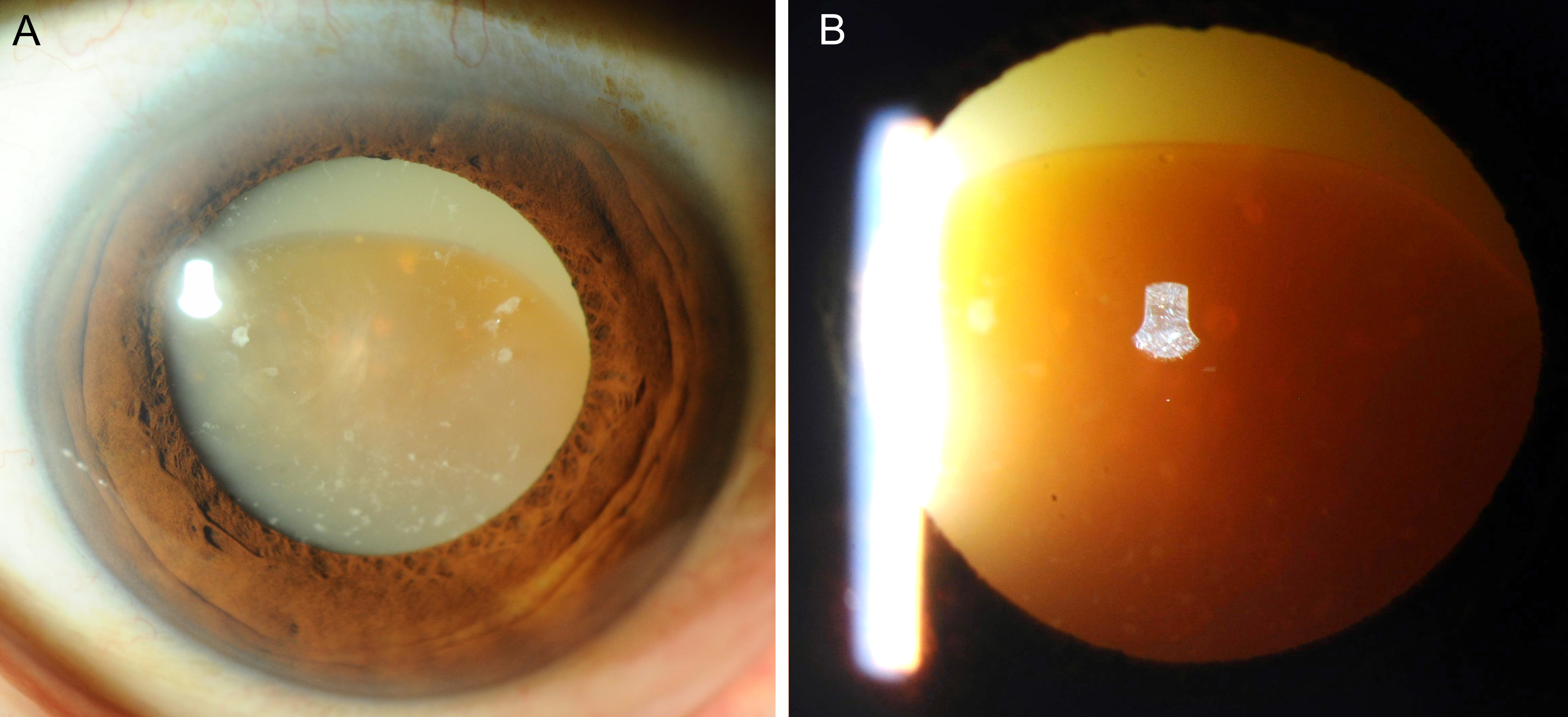Corresponding author: Takashi Ono, taono-tky@umin.ac.jp
DOI: 10.31662/jmaj.2022-0077
Received: March 30, 2022
Accepted: April 26, 2022
Advance Publication: June 24, 2022
Published: July 15, 2022
Cite this article as:
Ono T, Miyata K. Morgagnian Cataract. JMA J. 2022;5(3):379-380.
Key words: Cataract, Ophthalmology, Eye surgery
A 63-year-old man was referred to our hospital with a complaint of decrease in the vision of his left eye. The visual acuity of his left eye was hand motion. His intraocular pressure was 18 mmHg, with no evidence of intraocular inflammation. The lens had hypermatured as a Morgagnian cataract characterized by total liquefaction of the cortex (1). This allowed the nucleus to sink (Figure 1A), as shown by transillumination (Figure 1B). Phacoemulsification and intraocular lens insertion were performed without complications. A month after the surgery, the patient’s vision improved to 1.0, allowing us to perform a detailed fundus examination, which showed no abnormality. Morgagnian cataracts are frequently reported in developing countries; however, they are rare in Japan. They can spontaneously rupture into the anterior chamber and cause severe intraocular inflammation, and early detection and treatment are required (2), (3).

None.
T.O. and K.M. contributed to the design and conduct of the study and the collection, management, and interpretation of data. K.M. contributed to the preparation, review, and approval of the manuscript.
Not applicable.
Written informed consent was obtained from the patient.
Sukhija J, Kaur S. Morgagnian cataract. N Engl J Med. 2014;370(24):2326.
Chee SP, Chan NS, Yang Y, et al. Femtosecond laser-assisted cataract surgery for the white cataract. Br J Ophthalmol. 2019;103(4):544-50.
Hua X, Dong Y, Wang L, et al. Intraocular lens implantation performed first to protect the posterior capsule in Morgagnian cataracts during phacoemulsification. Int J Ophthalmol. 2019;12(7):1215-8.